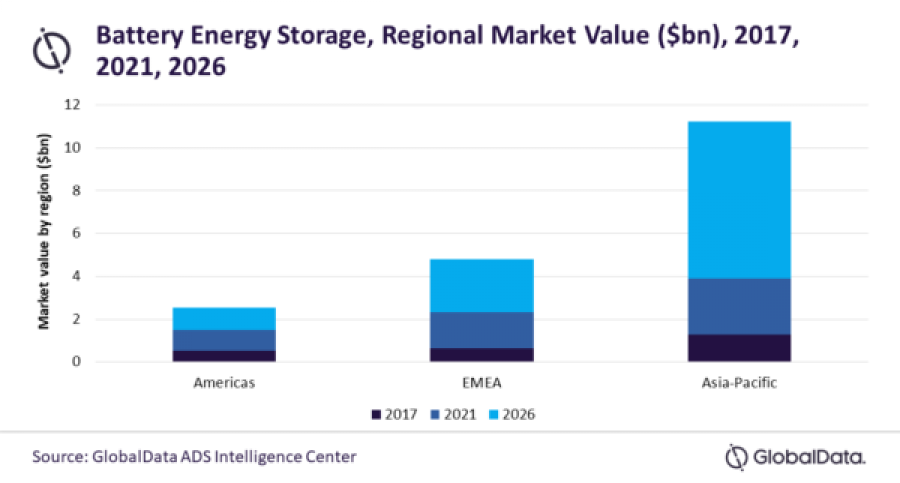

The global battery storage market will reach $10.84 billion in 2026, with the Asia-Pacific region accounting for 68% of total demand. China, Japan, India, South Korea and Australia will drive the regional market, according to GlobalData.
Bhavana Sri Pullagura, a senior power analyst at GlobalData, attributes the expected growth of the battery storage market to a “fall in battery technology prices, increasing need for grid stability, and resilience of the integration of renewable power in the power market.”
China, one of the fastest-growing economies, is expected to lead the global battery energy storage market with a $4.04 billion share in 2026. A mammoth target of 1,200 GW of wind and solar capacity will provide considerable growth opportunities to the energy storage market over the forecast period.

South Korea, the United States, Germany, and the United Kingdom will be the major markets due to supportive regulations and incentives. Other countries will also see rapid growth in demand for electricity and the wider use of renewable integration.
Over the last decade, countries have been aggressively promoting grid modernization and enhancing the grid's ability to meet present and future requirements. Additionally, batteries are being deployed to aid smart grids, integrate renewables, create responsive electricity markets, provide ancillary services, and enhance system resilience and energy self-sufficiency.
“GlobalData believes that encouraging policies and high electricity charges are also nudging the market to renewables and storage plus renewables at the end consumer level,” said Pullagura. “As the power sector evolves to accommodate new technologies and adapt to varying market trends, energy storage will play a crucial role in the transition and transformation of the power sector.”
PAND is committed to battery energy storage since 2019, providing low carbon, safe and most economical battery energy storage solution. It can provide household ESS,grid scale ESS, C&I ESS. Powerfree the life.